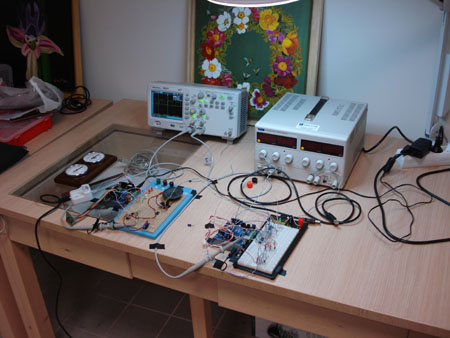Sensors
Wetness and Humidity at each plant were measured with two ways: resistive, zero-cost, custom sensors that the students built (for wetness) and low-cost capacitive sensors (1$ each), bought from an online electronic store (for humidity).
Both were interfaced to the MCU's ADC with (obviously) different ways; the resistive sensor through a voltage divider and special care for calibration. The capacitive sensor was interfaced through a monolithic, low-power 555 circuit; future versions will omit the 555.
Resistive wetness sensors were made with plastic ("frappe") straws, plaster and metalic rack hangers (used for picture wall hanging). Straws with plaster provided a fixed sensor geometry, with variable resistance due to watering. This design provided an ultra-low cost wetness measuring solution. Other ideas will be explored in future versions.
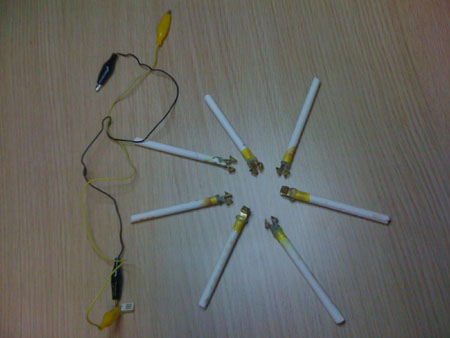
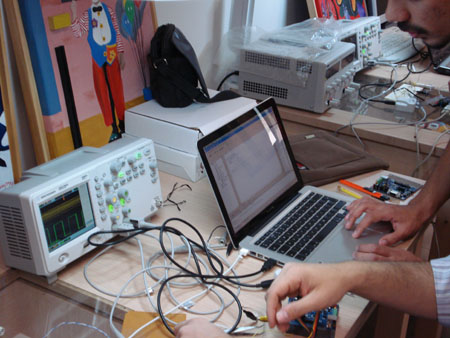
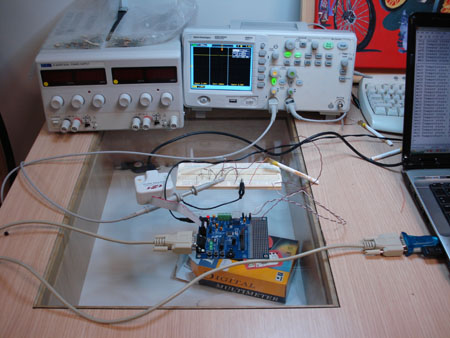
Capacitive sensor testing.
Notice that the students have also implemented a speaker circuit that playbacks music when the humidity is satisfactory, i.e. the plant sings happily whenever it is watered!!! (we will implement it in future versions).
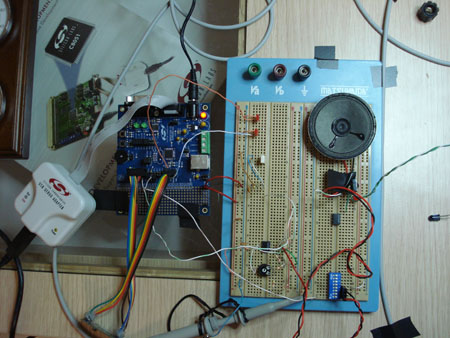
Testing all sensors.
Notice the old-fashioned wall thermometer! temperature was measured using the internal MCU temperature sensor.
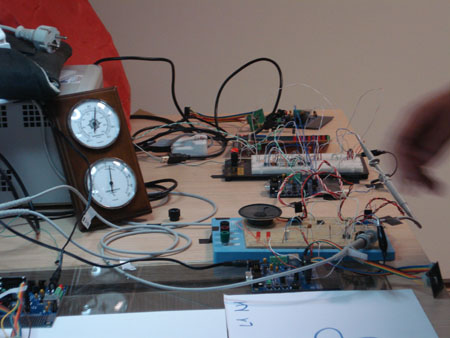
The students also implemented a system that monitors the direction of a car, passing through magnetoresistive sensors. Remember, the original idea was to utilize the wireless plant wetness/humidity sensor network to convey information, regarding availability in the parking lot, below the roof-garden!
